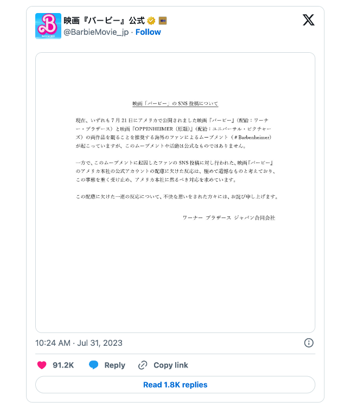.png)
Figure 1 - Statement of apology from the Barbie movie account in Japan
This experience isn’t unique. According to a recent Gartner survey, 27% of CEOs wish they had created a dedicated marketing resource when developing regionalised marketing activity.
With that in mind, here are 5 ways to avoid instant regret when marketing to consumers in different territories.
1. Clearly speaking the same language
89% of companies plan to translate their brand assets into additional languages in the next year, with a focus on either website content or campaigns.
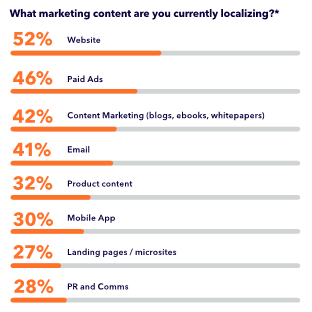
Figure 2 - Focus of content localisation efforts (Source: Gartner)
Getting this right is important. Research has shown companies risk losing 40% or more of their total addressable market if they fail to localise their content effectively. Over half of consumers also think having information in their own language is more important than price.
The process for localising content has lagged behind other marketing capabilities in terms of digitisation and automation. 41% of companies have a ‘highly manual localisation process’.
Copying and pasting content, or sending and receiving emails, increases the risk of errors or unforeseen mistakes. It’s not surprising that 67% of companies also said they “weren’t confident at all” in the quality of their translations.
Ensuring your content is available in a specific language can be a regulatory requirement in some countries. If your website targets customers in Saudi Arabia or South Korea, for example, it must be accessible in the local language.
Local differences can also occur. While Malay is officially the national language of Singapore, English is the de facto main language, so content needs to be in English to comply with local rules.
2. Translating designs, not just words
Translation processes focus on text changes so content can be understood in different languages. However, designers also use fonts, colours, shapes, or icons as a visual language to communicate with users.
Localising content can involve translating your visual design, not just text.
This can range from small changes to the UI to more significant changes in UX or the underlying capabilities of a content management system.
For example, mobile apps in China use a ‘discover’ button instead of a hamburger menu. This is represented by a compass, steering wheel, or magnifying glass, and indicates to users where low-priority items can be found. Interface designs make liberal use of red dots to alert users to changes, news, or updates.

Figure 3 - Mobile app UI trends in China
Translating to/from English also increases / decreases character lengths. This can affect the design of pages, content, or navigation systems. Languages like German, Spanish, and French tend to be more verbose, so extra space is needed to avoid wrapping or truncating. Line height is also important when designing for Chinese, Japanese, or Arabic markets, to avoid characters appearing too small.
It’s not just character types or lengths that change. Translating to one of 12 languages like Arabic or Urdu can also mean changing the design, so that text reads right to left (RTL), not left to right (LTR). ‘Mirroring’ the design requires a CMS that supports bi-directional text and this can affect where products, images, and CTAs are placed on the page.
Elements of designs that depict movement, such as arrows or animations need to be ‘mirrored’ so they read RTL. There are some interesting exceptions to this rule. For example, media playback buttons or progress indicators aren’t mirrored, as they reflect the direction that media is played, not the direction of time.
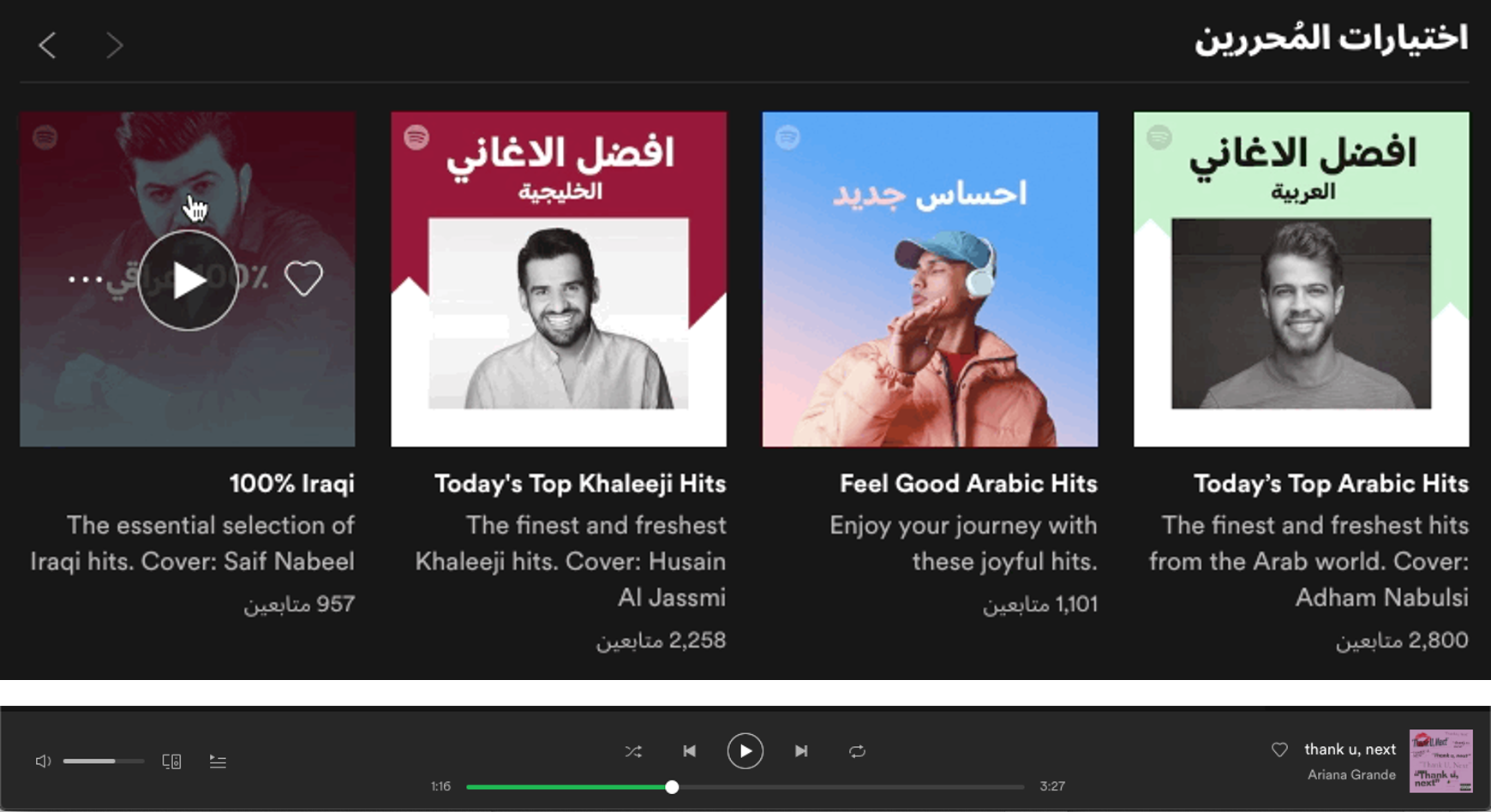
Figure 4 - Source: https://engineering.atspotify.com/2019/04/right-to-left-the-mirror-world/
Clocks or circular refresh icons should read LTR (clocks still turn clockwise in RTL languages), as well as numbers used for times, charts, or contact details. Icons that depict handheld objects, e.g., a magnifying glass that represents search, should also remain unchanged, as the majority of users in RTL-countries are also right-handed.
Figure 5 - Some icons aren’t mirrored in RTL languages. Source: Material Design
Finally, colours can mean different things in different countries.
Luck or good fortune is symbolised by green in the UK and US, but China, Denmark, or Argentina all use red. Care should be taken when using colours to indicate status, as green/red may communicate an upward/downward trend in one country but mean the opposite in another!
3. Adapting to cultural differences
According to Harvard Business Review, failing to adapt to local cultures is one of the biggest mistakes in global marketing. To maximise the opportunities market expansion provides, brands need to create experiences that feel authentic, effortless, and relevant to local markets from day one.
Getting this right requires a 360 degree view of local audiences, culture, and the competitive environment. By analysing cultural similarities or differences, marketers can understand which aspects can be shared or diversified when adapting global campaigns, content, or communications.
Hofstede’s cultural dimensions or ‘6 D model’ is a tool that’s commonly used for this. It’s a widely-recognised framework for understanding cultural differences and dynamics.
For example, China has one the highest ‘Power Distance’ rankings. This reflects a society that believes “inequalities amongst people are acceptable” and scores higher for masculinity, which means people are “competitive and success orientated”. As a result, Chinese people will prioritise work over family and leisure time compared to Americans, who have a more balanced work/life perspective.
These differences in values are reflected in the different creative below (both executions show the same kitchen but it is designed to look bigger in the US version of the catalogue than the one for China).
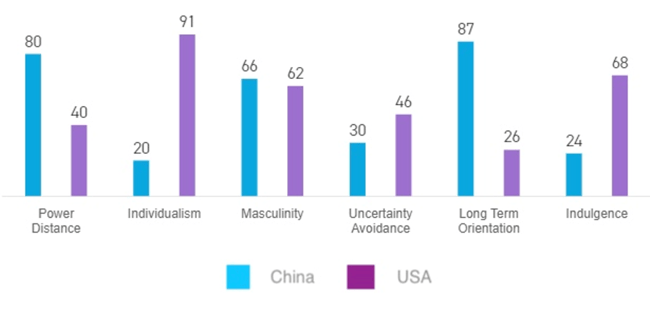

Figure 7 - Hofstede cultural dimensions vs Ikea advertising used in USA/China
4. Localise channels and capabilities, not just content
As business become more globalised, marketing has become more standardised. Companies with an international brand presence use similar communication methods and centralised messaging to tap into universal wants/needs in different regions. What’s worked in one market becomes the template for success when expanding to another.
Proximity to the home market can sometimes be misleading, as consumers can have different values, preferences, and behaviours - even if the geographic distance between markets is relatively small.
For example, in Germany, ecommerce spend is relatively high, but the use of credit cards remains low. This is due to cultural differences - the German word for debt, schuld, also means guilt. This is reflected in local payment trends as over 80% of Germans use PayPal to buy online, while 41% use wire transfers. Only 1 in 3 consumers uses a credit card to buy online.
To use the UK as a comparison, PayPal is popular, but consumers are more likely to use debit/credit cards to pay for goods online.
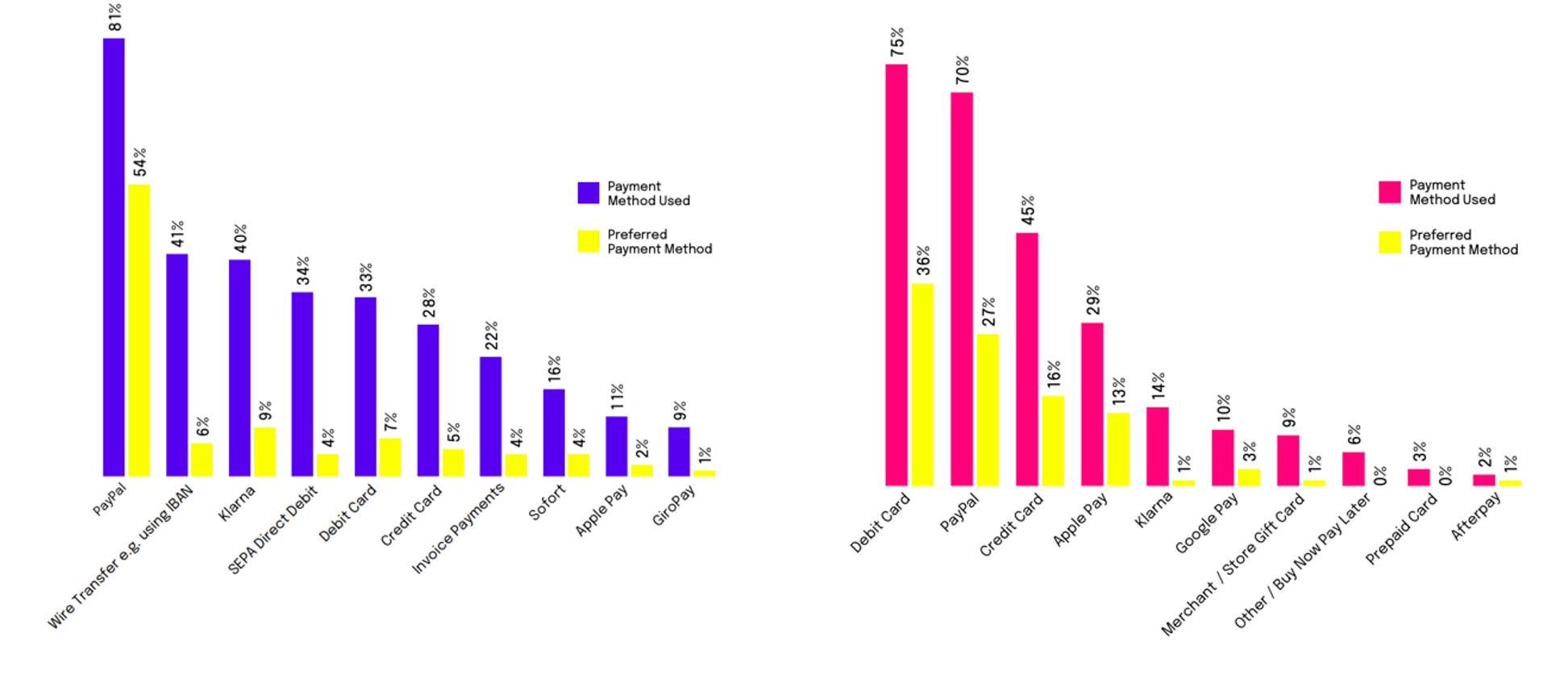
Figure 8 - Payment preferences and behaviours: Germany (left) vs UK (right)
Creating experiences that connect with local audiences requires more than just a change in language or content. In some cases, new features, channels, or service propositions are required to meet local demands and expectations.
For example, Nike’s business took off in Japan when Nike.com customers were given the option of shipping to their local convenience store. This required the integration of 12,000 konbini stores into their supply chain and adding functionality to support konbini payments. This allowed customers to pay cash-on-delivery and it accounts for 10% of online transactions in Japan.
Meeting expectations for next-day delivery in Japan also meant Nike had to open a new distribution centre. This employed 200 picking robots and 6,000 racks, so that workers spent less time walking between storage and packing areas.
Figure 9 - Nike automated warehouse operations to support next-day delivery in Japan
5. Localising search without duplicating efforts
An international approach to SEO is crucial for visibility when competing in different markets. A multi-language approach is also needed if different markets use different languages. While translating priority keywords from your source market so you can optimise content in your other markets seems like a logical approach, it can sometimes fail to deliver.
Each market has its own ‘search culture,’ so the same list of priority keywords can’t be used in every market - even if they speak the same language. For example, people from the UK ‘take a holiday’ while Americans ‘go on vacation.’ Although search engines are used less in China, users will typically include the phase “official website” to ensure they land on the legitimate version of a website.
It's also tempting to have separate websites with separate URLs for each country (dot.co.uk, dot.fr, dot.es, etc.). This makes sense when content needs to be localised for different markets, but it can lead to issues if duplicate content is simply translated into other languages. In cases like this, the global dot.com site will often outrank the local country site, negatively affecting a brand’s visibility and customer journey.
Finally, care should be taken when giving users the option to select different countries, languages, or currencies. Languages are spoken by people in multiple countries, so there isn’t a 1-2-1 relationship. This is often overlooked, even by sites designed to help users learn another language!

Figure 10 - Babbel / Duolingo use the Brazilian flag to indicate Brazilian Portuguese
The importance of translation and localisation
Translation is important to get right when marketing to other territories, but it's only one step in the process.
Content, journeys, and channels also need localising to suit local conditions. Success depends on understanding local audiences and cultural dynamics to avoid making clumsy mistakes and not leaving room for improvement.
This often requires a change in process, as translation is often considered right at the end of a project. By looking at translation and localisation in parallel during the website design phase, organisations have more opportunities to explore, test, and refine their designs in different languages prior to launch.
Localisation shouldn’t be seen as a one-off activity. It requires a structured approach that supports iterative improvement at a local level and continuous improvement at a global level. Having a global platform and process can aid learning and optimisation by allowing you to discover which localisations resonate with local audiences, or where global content performs better.
How DCX can help
For over 20 years, we’ve been helping organisations with their strategies to improve customer experience across multiple regions, territories, and brands.
Our expert strategy and consultancy team will help you align your proposition and digital strategy with your business strategy and craft a compelling vision of the future state of your web estate that will result in better outcomes for your brand, business, and customers.
Get in touch with us to find out more.
